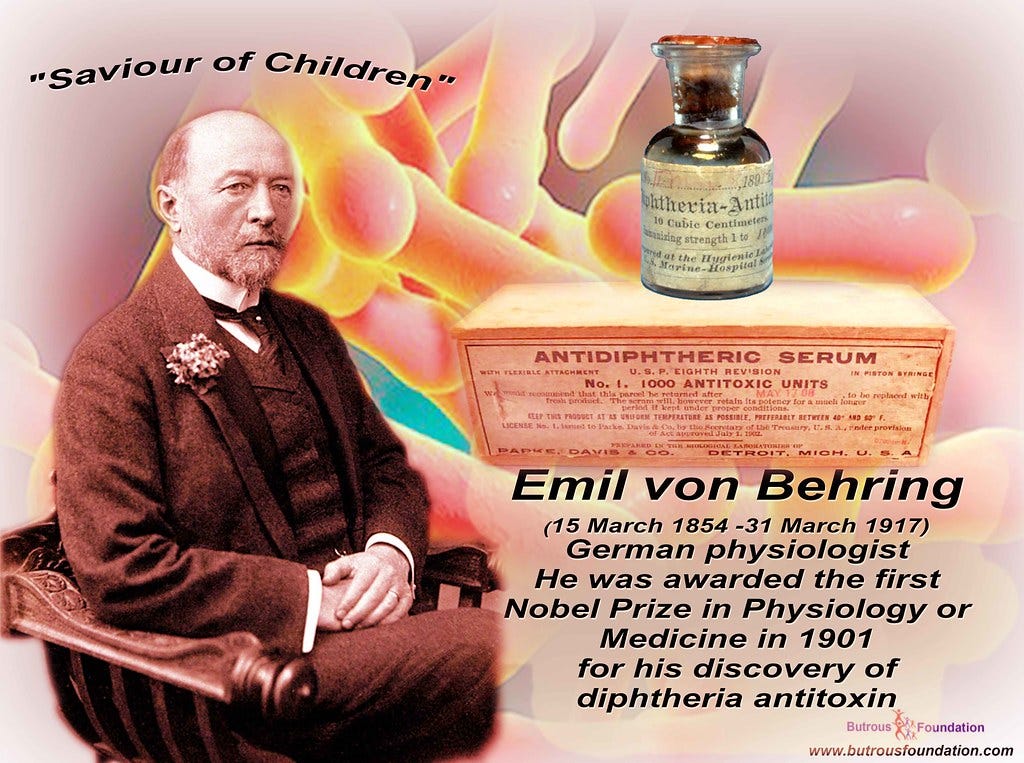
If the corona virus pandemic has you in a funk, it’s time to think outside of the box for possible solutions. We’ve had the bejesus (a technical term) scared out of us by talk of death and overwhelming the healthcare system so it would be natural for a sane human to be a little bit freaked out. But this is exactly the time when the best minds look outside of the box and begin imagining solutions. Often, but not always, the creative mind finds new uses for already existing tools and technologies and this is one of those times.
· In this short essay I will present an alternative treatment to corona virus disease, covid-19, using antiserum and how developing an anti-serum is quick, safe and effective.
· I’ll also show that anti-serum is no substitute for a vaccine, which experts say will take 18 months.
· But I will also position anti-serum as the just-right solution for today and for getting us through a tight spot in human history.
First a little background that involves exactly no math and might even be fun to have in mind if you ever get back to the cocktail circuit (don’t worry, you will).
Emil Behring (1854–1917) developed the first antiserum, in this case for diphtheria which causes whooping cough and was the number one cause of death in children under 15 years in the late 19th century. Whooping cough was a big deal before the multi-valent DPT vaccine (Diphtheria, Pertussis, Tetanus). For instance, the annual Iditarod sled dog race from Anchorage to Nome celebrates the effort to bring life-saving diphtheria antiserum to children afflicted in Nome.
Behring won the first Nobel Prize in Medicine for his efforts. Those efforts began when Behring observed that people afflicted with a disease like diphtheria, but who do not die, developed an immunity that prevented them from ever getting the disease again.
Behring’s work happened before much was known about antibodies and how immunity works but today, we know that there are two basic types of immunity, active and passive. Active immunity happens when an individual develops an antibody to a particular entity such as a virus or a bacterium. Passive immunity happens when active immunity is extracted from someone’s blood and transferred to a patient sick from the same disease entity.
There are some purification steps in this process which I am omitting for civilians, but it’s not necessary to use human antibodies to treat human disease. Behring developed his antiserum in horses because they have robust immune systems and can make antisera by the gallon.
Medical science has developed anti-sera for tetanus, snake venom, rabies and a host of other diseases. In the lab we use antisera as components of tests for a wide variety of other maladies. Medical technologists use antisera tagged with various dyes, radioactive or luminescent molecules which give off color, mild radiation or light when they attach to the target entity, indicating a positive test.
In a patient, antibodies found in antisera work the same way except when they attach to a foreign object, they attract white blood cells which devour the object and clear the patient of the disease in the process.


An antiserum confers passive immunity on a patient which means that the person could become re-infected at some point. However, a person with an active disease who receives an antiserum is likely to have begun the process of making their own active antibody. So there is some ambiguity in whether or not a patient who receives antiserum will develop active immunity. But the point is that an antiserum can save lives and let patients live to fight another day, perhaps one when a vaccine is available.
In this light, an antiserum would be most useful in helping to blunt the full force of covid-19 disease and thereby help “flatten the curve,” a term much in use today. People treated with antiserum might not need as much aggressive care or the use of ventilators and respirators, which are in short supply. Best of all, an antiserum to the corona virus could be made comparatively quickly.
It would be nice to be able to inoculate horses and make antiserum by the gallon and that route should be pursued. But an even faster path to antiserum exists. Today, there are already people walking around with antibodies to the corona virus. Some have had acute disease, but others had no disease or mild symptoms and have antibodies circulating in their bloodstreams. They all have active immunity.


If some of these people could donate a unit of plasma, a process that takes the liquid portion of a unit of blood but returns the red cells to the donor, we’d have the starting material for an antiserum. Other processing would be required such as testing for the viruses that causes AIDS, hepatitis, and a few other things, but we already do this routinely in blood banking. As a human blood product, antiserum might need to be crossmatched with the target patient’s own blood type, something routinely done for other transfusions of blood and blood products.
That’s about it, though. Antiserum is no alternative for a vaccine that produces an immune response and active immunity in its recipients, but it is a fix that could get us out of this pandemic situation with fewer deaths and with a flattened infection curve that keeps the medical system from being overwhelmed.


